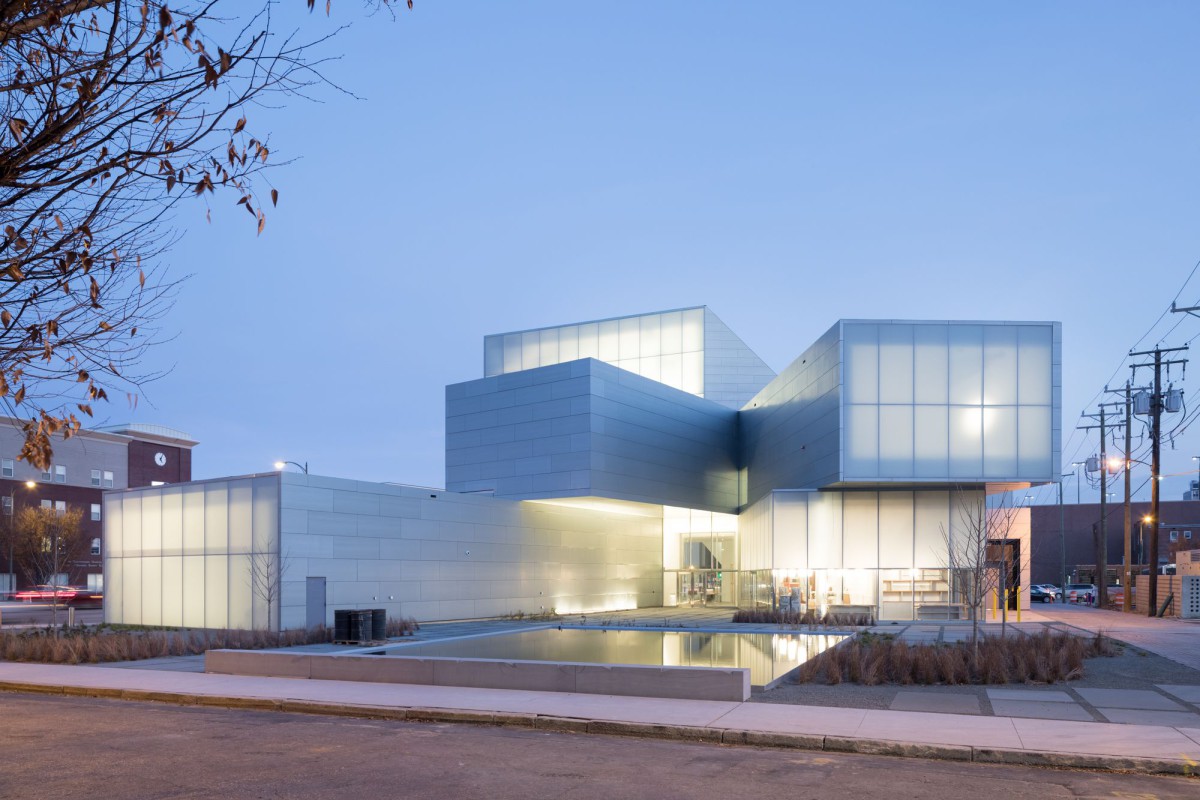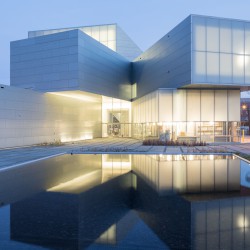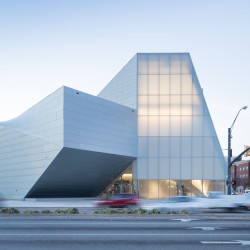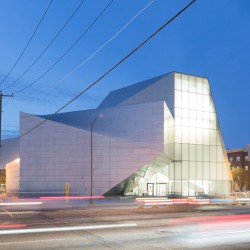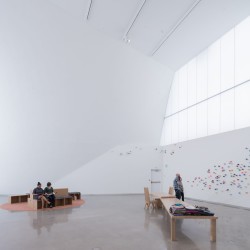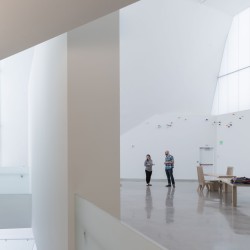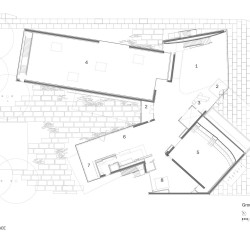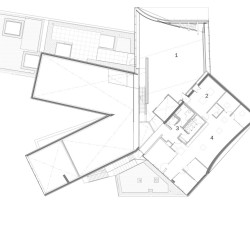Steven Holl Architects . photos: © Iwan Baan . + baunetz
The open design of the ICA features dynamic exhibition and programming spaces that can be creatively activated in order to support widely varied forms of contemporary art. The glass walls and windows create continuity between the interior and exterior spaces of the building. On the first floor, a 4,000-square-foot gallery and café, bar, and concept shop radiate from the ICA’s central forum and frame an outdoor garden, which Steven Holl describes as the “Thinking Field,” that will be used for social gatherings and public programs.
_
The first floor also features a state-of-the-art 240-seat auditorium for film screenings, performances, lectures, and other programs. The second floor includes two forking galleries and an adaptable “learning lab” for interactive engagement. It also includes a publicly accessible terrace, featuring one of four green roofs. The third floor features a gallery with soaring, 33-foot-high walls and houses one of the administrative suites and the boardroom. Additional staff offices are located in the building’s lower level, which also includes a lobby for visitors, art storage and preparation facilities, a fabrication workshop, a green room, the catering kitchen, and general storage.
In keeping with VCU’s master sustainability plan, the ICA’s design incorporates state-of-the-art technologies and environmentally conscious design elements, and makes use of numerous natural resources. The pre-weathered, satin-finish zinc exterior of the Markel Center, which houses the ICA, includes interspersed clear- and translucent-glass walls and skylights that infuse the building with natural light and lessen the reliance on nonrenewable energy. These include the use of geothermal wells to provide heating and cooling energy for the building, and four green roofs to absorb stormwater, offset carbon emissions, and maximize insulation. Native plantings include wood oats, little bluestem, Pennsylvania sedge, and goldenrod. Building materials include Virginia bluestone and custom glass cavity walls, designed to exhaust heat in the summer and harness it in the winter. The project is designed to meet LEED Gold Certification standards.

